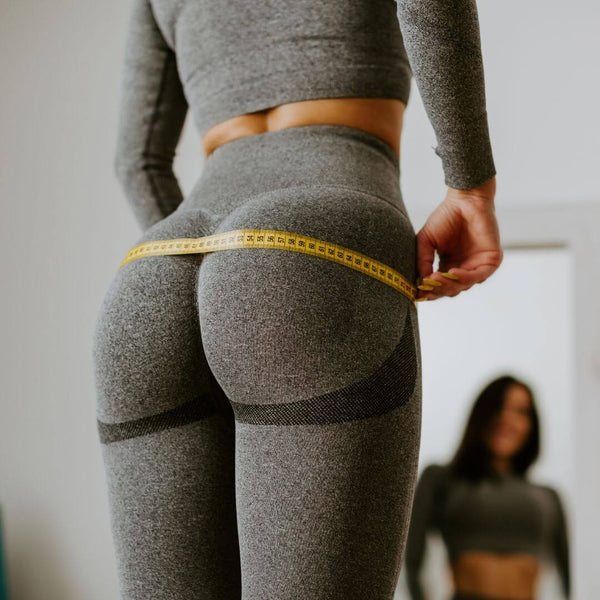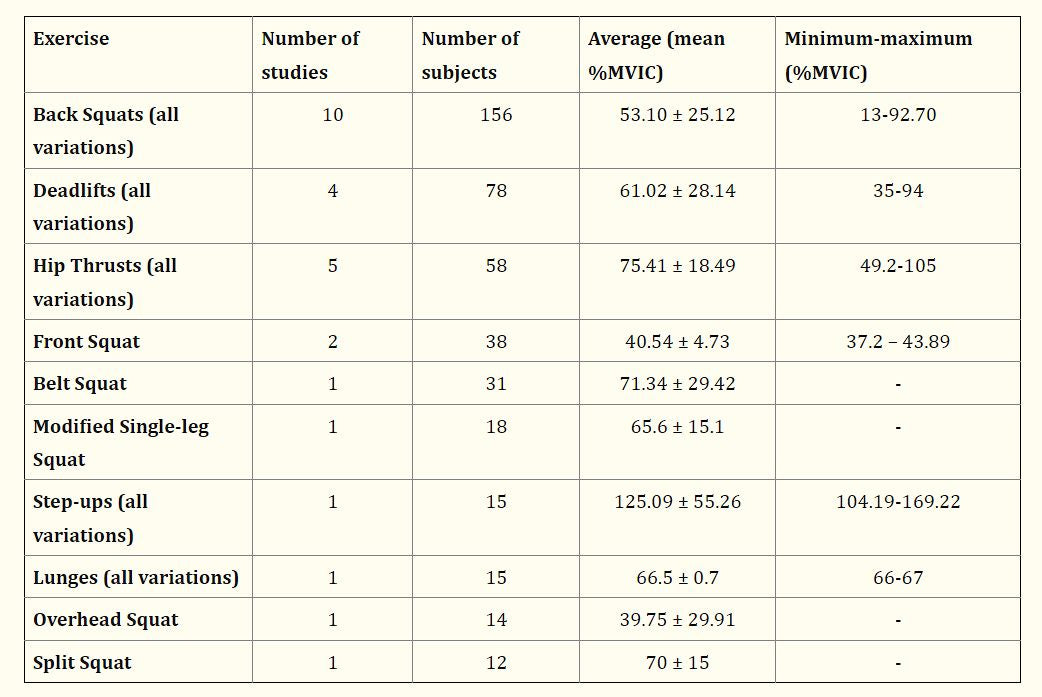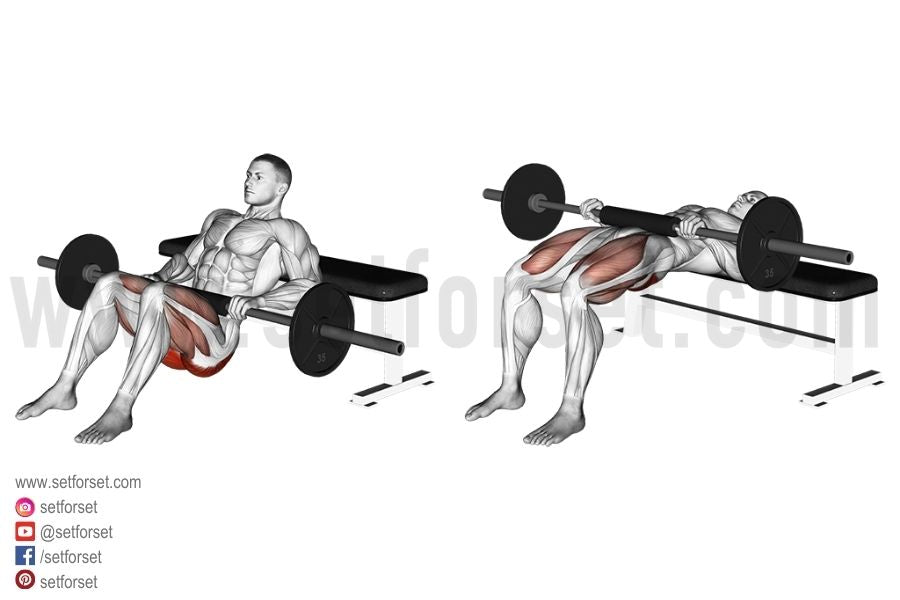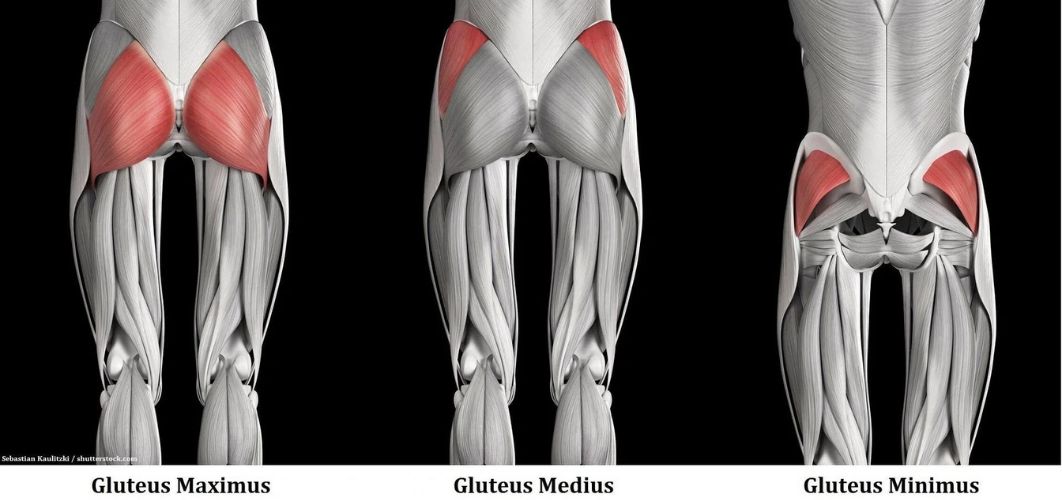
Booty. Ass. Buttocks. Cake. Okay, enough of the cheeky banter, and let’s get straight to the bottom of this article. When it comes to sculpting a rounder, firmer, and overall bigger derrière, there’s really no shortage of workout routines promising insane results.
The biggest thing to focus on when trying to work your butt is to focus on the correct exercises that deliver the biggest impact. As someone who is a part of the big butt club, I’ll show you the three glute exercises I do (spoiler: Step-Ups, Deadlifts, and Hip Thrusts) and potentially help you to achieve your goals efficiently and effectively.
Table of Contents
- The Three Best Glute Exercises
- Why Should You Build Bigger & Stronger Glutes?
- Muscle Anatomy of the Glutes
The Three Best Glute Exercises
1. Step-Ups
Now, you may be shocked to see step-ups in the number one spot, instead of the often lauded squats, but hear me out. Not only is the range of motion on a step-up better than a lot of people can perform on a traditional squat, step-ups actually activate the glutes significantly more than most exercises. Just check out the chart below from a study published in 2020.¹

Figure 1: Neto, Walter Krause, et al. (2020)
Just from a simple glance, you can see step-ups have a significantly higher muscle activation than all the other lower body exercises performed.
Why To Do It:
As if that chart above wasn’t reason enough, unlike other exercises, even those on this list, you don’t need any fancy equipment to perform this movement, just a sturdy raised surface. Step-ups can be performed almost anywhere, making these a versatile way to get booty work in without having to drag yourself to the gym.
Don’t get me wrong, as a trainer, I absolutely love squats and think they should be a part of most people’s training regimens. But when it comes to targeting the glutes, these are king. I teach my clients to get the most activation out of their glutes by having them focus on engaging them first before even starting the movement.
Those with knee problems may find that this technique of pushing with your glutes rather than your quads can take some strain off of your knees.
How To Do It
- Start by facing a raised surface, like a weight bench, chair, or plyo box.
- Next, stand with your feet roughly shoulder-width apart or slightly wider.
- Put one foot onto the bench and engage your glutes.
- Push through your heel to bring your body into a standing position on top of the bench.
- In a controlled manner lower yourself back down to the floor.
- Repeat for as many reps as desired and switch to the other leg.
Trainer Tip: Get comfortable with the movement before thinking about adding weight. You’ll be surprised how difficult it can be to balance while performing this exercise, especially on a weight bench that has some give to it. Once you’re comfortable with the motion, experiment with tempo, think explosive speed or a very slow, controlled pace. You’ll be surprised how difficult pacing can make this exercise. Shoot for at least 10 reps per leg for three sets.
Variations:
Dumbbell Step-Ups: This alternative requires you to grab a pair of dumbbells to increase the difficulty.
Crossover Step-Ups: Be forewarned, these are absolutely brutal. Instead of facing the bench, stand next to it. Use your outside foot to…wait for it…crossover in front of your other foot onto the bench. Push off the leg on the bench to bring yourself to standing on the bench. Lower yourself down to the other side of the bench, still on one foot. Reset to both feet on the floor, and down the same motion for the other side. Once you get good at these, don’t be afraid to grab a set of light dumbbells to jack up the intensity.
Lateral Step-Ups: Just like the crossover step-ups, you’ll be standing next to the bench rather than facing it. Lift your inside leg onto the bench, push yourself to standing, than lower yourself down. These are basically the same motion as a regular step-up, just rotated 90º.
2. Deadlift

Now it was a tight race whether I wanted to put the deadlift or Romanian deadlift (RDL) here as they both are hinge movements that primarily target the hamstrings and glutes while also engaging the lower back, quads, and core muscles. Ultimately, I went with deadlifts because the research is clear when it comes to which one of these exercises reigns supreme.²

Figure 2: Lee, Sangwoo, et al. (2018)
I did find it interesting though, when I gave a poll to my clients, the majority said that Romanian Deadlifts targeted their glutes the most.
Why To Do It:
Deadlifts have a somewhat intimidating reputation because they are a staple of a powerlifter’s routine, and it’s not uncommon to see the human equivalent of a water buffalo lifting the weight of a small car on a deadlift platform. While this can be off-putting to someone that just wants to put a little junk in their trunk, it’s well worth giving this exercise a shot.
Not only will it help you fill out your jeans, deadlifts can help build up core strength as well as several other benefits covered in our article on Deadlift Benefits.
How To Do It:
- Stand with your feet shoulder-width apart behind a barbell.
- Position your hands on the bar just outside of your legs, some people like to use a mixed grip, with their hands facing opposite ways. I prefer to use an overhand or hook grip.
- Brace your core, keep your chest up, and sink your hips down to almost a squat position.
- Keeping the bar close to your legs, squeeze your glutes, start pushing your hips forward.
- Keep your back straight as the bar starts rising, aiming for your back and knees to be coming to a standing position at the same time.
- Hold the top position for a second, then lower the weight to the floor in a controlled manner.
Trainer Tip: Start with a lighter weight, and really focus on using your glutes to drive the movement. Once you’re comfortable with the movement, then you can start adding some weight. To make that booty grow, you’re gonna want to be in the 8-10 rep range (lower reps will help make you stronger, but hypertrophy is what we’re aiming for). Because this is a compound exercise, you should be doing this toward the start of your workout.
Variations:
Romanian Deadlifts: This is a fantastic variation I do every other leg workout. To do it properly, keep your knees slightly bent, the bar tight to your legs, and really squeeze your glutes at the bottom of the movement the get the most out of it.
Sumo Deadlifts: With the same idea as the deadlift, the Sumo deadlift involves spreading your feet out into a wider stance, so your arms are grabbing the bar inside your legs. Once you start sinking into the stance, you’ll understand why these are a great alternate to add to your lower body workouts.
Banded Romanian deadlifts: A fan favorite amongst my clients, add a resistance band around your hips or under your feet to increase tension throughout the movement, especially at the top, where the glutes will be the most activated.
3. Hip Thrusters

On Instagram and TikTok, you will see mostly women performing this move, but don’t let that deter you, gentleman. Hip thrusters are one of the best ways to isolate and strengthen the posterior chain, especially the gluteus maximus, medius, and hamstrings. Going back to Figure 1, hip thrusts had the second highest muscle activation, which means they should be a mainstay in everyone’s butt workouts.
Why To Do It:
If you struggle with lower back pain but still want to lift heavy weights, then hip thrusters are an excellent exercise for you! Hip thrusters are great at isolating the glutes by placing them in a good position for maximum muscle activation while also reducing the strain on the lower back muscles.
Lifting the hips against resistance effectively stimulates muscle growth and strength development in the glutes, leading to better shape and definition.
How To Do It:
- Start by sitting on the ground with your upper back against a bench and a barbell positioned across your hips.
- Roll the barbell towards your body to rest just above your hip bones. I recommend using a pad on the bar to keep your hips from being bruised by weight.
- Plant your feet flat on the ground, shoulder-width apart, and brace your core.
- Drive through your heels, lifting your hips towards the ceiling while squeezing your glutes at the top of the movement.
- Slowly lower your hips back down under control, maintaining tension on the glutes throughout the movement.
Trainer Tip: I’ll occasionally start out my leg days with three or four heavy sets of 6 reps to hit my glutes while they’re fresh. But what I really like doing is throwing these in at the end of my leg days, to fully burn out my glutes. I’ll usually go for higher reps, around 20, for three sets.
Variations:
Single-leg hip thrusters: If you’re looking for a fun challenge and want to work your oblique more, do hip thrusters with one leg elevated. Focus on driving through the heel of the working leg to engage the glutes unilaterally.
Weighted hip thrusters: Instead of using a barbell like most people do, you can also use a dumbbell, kettlebell, or a weight plate across your hips to increase resistance and challenge the glutes in a slightly different way.
Band-resisted hip thrusters: Loop a resistance band around your hips and anchor it to a sturdy object in front of you to add extra resistance throughout the movement, particularly at the top where the glutes are fully contracted.
Why Should You Build Bigger & Stronger Glutes?
Besides the obvious benefits of having a fuller, rounder set of buns, there are several other great reasons to prioritize glute development in your fitness routine:
Improved athletic performance: I don’t know about you guys, but I have been really getting into pickleball lately, and I’ve noticed that working on my glutes has played a big part in my explosive power. This is because strong glutes play a vital role in athletic movements such as running, jumping, and lifting by enhancing power, speed, and agility.
Reduced risk of injury: Those of you who think that having good glutes is pointless probably don’t realize that having weak glutes can contribute to imbalances and force other muscles to try and compensate in movement patterns, which increases the risk of injuries such as lower back pain, knee pain, and hip issues.
Enhanced functional strength: Strong glutes are essential for everyday activities like walking, climbing stairs, and lifting objects, improving overall functional capacity and quality of life.
Muscle Anatomy of the Glutes

(Image credit to original owner)
While it may not seem important, understanding the glutes’ anatomy can provide valuable insight into their function and the best ways to train them optimally. The gluteal muscles consist of three main components:
Gluteus maximus: The largest and most powerful muscle in the gluteal group. It is responsible for hip extension and supports the extended knee through the iliotibial tract and rotation. Basically, it helps you skip, run, walk, and jump. It is also the muscle that makes up the bulk of the form and shape of the butt and hip area.
You can find our favorite Gluteus Maximus Exercises here.
Gluteus medius: This is an interesting muscle because it is shaped like a hand fan. It is located on the outer surface of the pelvis; this muscle supports hip abduction and stabilization of the pelvis during movement.
Want to really work those upper glutes? Find our recommended Gluteus Medius Exercises here.
Gluteus minimus: Situated beneath the gluteus medius and the smallest of the three muscles, this fan-shaped muscle also aids in hip abduction and stabilization, especially in weight-bearing activities.
?Why not round out your glute building journey by checking out the Best Gluteus Minimus Exercises?
Outro
Despite what you see all over social media, building a bigger, more muscular butt doesn’t require a complicated array of exercises and equipment. Working out just the glutes for hours at a time isn’t even necessary.
Instead, by focusing on the three powerhouse moves outlined in this article—step-ups, deadlifts, and hip thrusters—you can efficiently and effectively sculpt the ass cheeks of your dreams. So, prioritizing glute development can yield impressive results if you aim to enhance your physique, improve athletic performance, or simply look caked up when out in public.
Now that you’re on your way to beefing up your backside, it may be time to think about adding some muscle to the rest of your body, and the perfect way to do that is the SFS Hypertrophy Program.
Citations:
- Neto, Walter Krause, et al. “Gluteus Maximus Activation during Common Strength and Hypertrophy Exercises: A Systematic Review.” Journal of Sports Science & Medicine, vol. 19, no. 1, 24 Feb. 2020, pp. 195–203, www.ncbi.nlm.nih.gov/pmc/articles/PMC7039033/.
- Lee, Sangwoo, et al. “An Electromyographic and Kinetic Comparison of Conventional and Romanian Deadlifts.” Journal of Exercise Science & Fitness, vol. 16, no. 3, Dec. 2018, pp. 87–93, https://doi.org/10.1016/j.jesf.2018.08.001.





